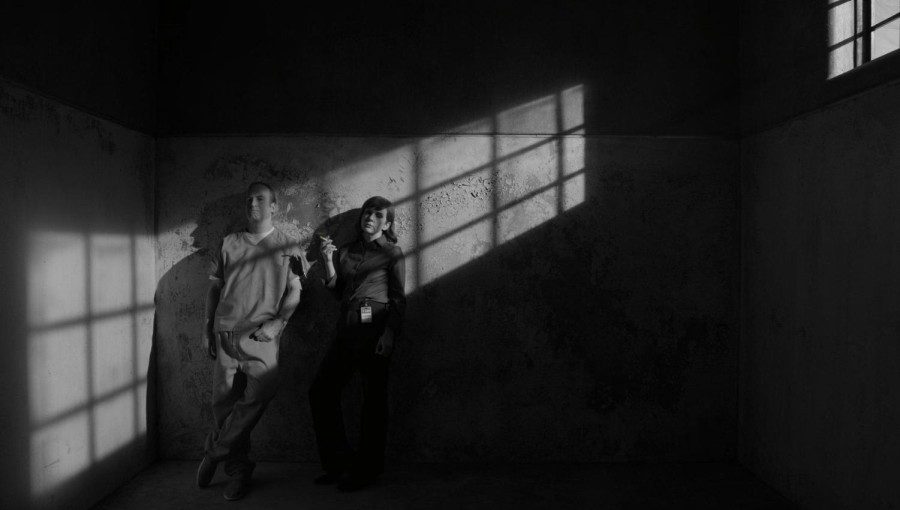‘Better Call Saul’ is one of the greatest television series of the last decade
Despite being pit against the sky-high expectations following ‘Breaking Bad’, its prequel, ‘Better Call Saul’, has undoubtedly made its mark as one of the best TV series of the 2010s.
September 26, 2022
When it was first announced that there would be a prequel to “Breaking Bad” — one of the most acclaimed TV series of the 21st century — people were naturally skeptical. The thought of expanding upon a show as irrevocably complete as “Breaking Bad” was met with anxiety from fans and critics alike — how could Vince Gilligan possibly match what many have claimed to be one of the greatest TV shows of all time?
Co-created by “Breaking Bad” showrunner Vince Gilligan and creator of the Saul Goodman character Peter Gould, “Better Call Saul” follows the infamous criminal lawyer’s surprisingly tragic backstory. Above all else, the show shines in its character work. Its cast and the team of writers came together to create and portray fictional characters with authenticity, depth and a dash of heightened realism.
James “Jimmy” McGill (Bob Odenkirk), Saul’s real identity, is unexpectedly sympathetic in ways Walter White (Bryan Cranston) was most certainly not. From Jimmy’s emotionally complicated personal relationships to his dealings with a Mexican cartel, “Better Call Saul” humanizes its protagonist and treats him with the utmost respect. The audience watches as he transforms from an immature con artist to a genuine, kind-hearted lawyer — and eventually back into an immature con artist. Jimmy’s rise and fall, elevated by Odenkirk’s profound performance, adds nuance to what seemed in “Breaking Bad” to be a two-dimensional, snarky comic-relief character.
In addition to Odenkirk, “Saul” invites back Jonathan Banks and Giancarlo Esposito as the iconic “Breaking Bad” characters Mike Ehrmentraut and Gus Fring. While the two characters were portrayed as antagonists in “Breaking Bad,” they are given remarkable depth in “Saul,” which makes for some of the best moments of both shows.
Ehrmentraut’s striking emotion adds necessary subtext to his stone-cold, indifferent mannerisms in “Breaking Bad,” and Banks’ performance elevates this development. Esposito is, once again, phenomenal as Fring, the intimidating drug lord who also runs a fast food chain. However, while “Breaking Bad” portrayed Fring as strictly cold and calculated, “Saul” eloquently expands upon his psyche and motivations, mainly through the show’s terrifyingly ruthless antagonist Lalo Salamanca (Tony Dalton).
“Better Call Saul” also introduces newcomers to the “Breaking Bad” mythos, including characters like Nacho Varga (Michael Mando). Nacho, arguably the best-written character in the series, is a cartel member, but, unlike his coworkers, he has a moral compass. Despite his shady occupation, he cares deeply for his loved ones, especially his father — an honest and hard-working repair shop owner. Throughout the series, particularly in the show’s final season, Nacho displays regret for the life he chose and acts to right his wrongs. The criminally underappreciated work of Mando conveys genuine conflict and humanity in the role, making for an incredibly moving character arc.
Outside the layered criminal world of “Better Call Saul,” Jimmy’s private life is equally as seminal to the show’s overarching narrative. Jimmy’s relationship with his brother, Charles “Chuck” McGill, brilliantly performed by Michael McKean, is one of the many highlights of the series. Chuck, a successful and intelligent lawyer, is convinced he has the electromagnetic hypersensitivity condition — in simple terms, he thinks he is allergic to electricity. Jimmy devotes his life to supplying Chuck with everyday necessities while simultaneously working as a lawyer.
Chuck never approved of Jimmy becoming a lawyer, always viewing him as the untrustworthy, irredeemable con artist he once was. His constant disapproval of Jimmy’s attempt at change causes bitter disputes between the two brothers, crafting an authentic and complex relationship that proves to be one of the show’s greatest achievements. “‘Slippin’ Jimmy with a law degree is like a chimp with a machine gun,” Chuck says in episode nine of season one.
Attorney Howard Hamlin (Patrick Fabian), a coworker of Chuck’s, is occasionally caught in the middle of the two brothers, often refusing to give Jimmy a job strictly because of Chuck’s disapproval. Hamlin is introduced to the viewer as a cocky, antagonistic lawyer type. However, as the show progresses, it is clear that he is the only main character who is a decent person, for lack of a better term. He is continually placed in challenging situations, leaving the viewer to gradually develop sympathy for his easily avoidable circumstances.
Kimberly “Kim” Wexler (Rhea Seehorn) is Jimmy’s love interest and the heart of the series. Kim, who is also a lawyer, is always by Jimmy’s side, even when she should stay uninvolved. At her best, Kim is a compassionate attorney who loves helping people more than anything; she even mentions Atticus Finch (“To Kill a Mockingbird”) as her childhood idol. At her worst, she’s as bad as Slippin’ Jimmy, often enjoying deceiving others for personal gain. Despite this, Kim is self-aware and realizes when she and Jimmy go too far, but they never act on their guilt before it’s too late. Kim’s self-reflection, beautifully portrayed by Seehorn, emphasizes the theme of regret present throughout the series.
“Better Call Saul,” at its core, is a story about regrets — about trying to fix the past, but to no avail. Instead, characters act upon their immediate impulses and face the consequences. Contemplatively, the series raises the question of whether one should live with regret or try to right their wrongs, no matter how despicable they may be.
While the series’ biggest accomplishment is in its character work, “Better Call Saul” is not without its technical triumphs. From the very first episode, the show’s presentation is full of unequivocal self-assurance and confidence, particularly with the camerawork. Every frame of each episode is polished and meticulously composed. In moments of patience and subtlety, the sound design is immensely atmospheric And the series’ cinematography is some of the best and most inventive of any television series. Its gripping narrative is only elevated by its excellent filmmaking merits.
It’s no exaggeration to say that “Better Call Saul” was one of the most brilliant, surprising, meticulous and endlessly entertaining television works since, well, “Breaking Bad.” It is unfortunate that after eight years and six seasons of brilliance, “Better Call Saul” did not receive the level of praise of its predecessor, having been nominated for 46 Primetime Emmys and winning zero. However, to say that the show’s heights never reached those of “Breaking Bad” does a disservice to the passionate craftsmanship, original character work and masterful storytelling displayed throughout the harrowing series.
“Better Call Saul” isn’t just another spin-off or prequel — it’s a riveting and well-done story that was and remains independent of itself. That is its legacy.
Contact Yezen Saadah at [email protected].

























































































































































